When we first released our AMD EPYC 3101 benchmarks and review, it became apparent that our readers wanted the platform. The Supermicro M11SDV-4CT-LN4F in this review was our test platform and has a unique distinction: it is the lowest cost AMD EPYC 3000 mITX platform we have seen to date. For those in cost-sensitive segments of embedded appliance markets, this is perhaps a solution that may make a lot of sense. AMD still delivers a lot of performance in the segment, but at a lower cost than Intel.
Unlike the higher-end SKUs in the Supermicro M11SDV SKU stack, the Supermicro M11SDV-4CT-LN4F has a lower cost processor. With the onboard AMD EPYC 3101 4 core CPU, the solution is competitive with the Intel Xeon D-1500 and Xeon D-2100 series in terms of performance and power consumption, but not to the level of higher-end SKUs. We think that is fine. Many appliance vendors need CPUs at a different price, power, and performance point so the gap between this and the M11SDV-8C-LN4F makes sense.
As we have mentioned previously if you are a vendor looking to dual source your CPU suppliers for x86 operation, the AMD EPYC 3101 is a drop-in replacement using modern OSes. With security vulnerabilities like Foreshadow that only impacted Intel CPUs, having a second option qualified can help mitigate future vulnerabilities. It also can help to keep pricing competitive.
We attended the AMD EPYC embedded launch in London about a year ago. We first benchmarked the AMD EPYC 3251 a few months ago with a lot of the information on the AMD EPYC 3000 platform. This is the first platform we are reviewing with the lower-end SKU.
Test Configuration
Here is our basic configuration for this class of CPU:
- Motherboard: Supermicro M11SDV-4CT-LN4F
- CPU: AMD EPYC 3101
- RAM: 4x 16GB DDR4-2666 ECC RDIMMs
- SSD: Intel DC S3710 400GB
- SATADOM: Supermicro 32GB SATADOM
The CPU itself supports up to 512GB of RAM, in a 4x 128GB configuration. That is as much as the Intel Xeon D-2100 series platforms and more than both the Intel Xeon D-1500 and Intel Atom C3000 series embedded platforms.
We are going to have reviews down the stack over the course of the next few weeks. Practically, the Supermicro M11SDV-8C-LN4F, M11SDV-8C+-LN4F, M11SDV-8CT-LN4F, M11SDV-4C-LN4F, and M11SDV-4CT-LN4F are all very similar. We have a short video overview of the family.
You will see this test setup more in the future and it is similar to our Intel Xeon D review platform. We also spent time plugging in devices to ensure the NVMe and PCIe lanes worked as advertised. We also tried up to 128GB of RAM in 4x 32GB configurations in our testing.
Supermicro M11SDV-4CT-LN4F Overview
Measuring 6.7″ x 6.7″ the Supermicro M11SDV-4CT-LN4F is a compact mITX motherboard.
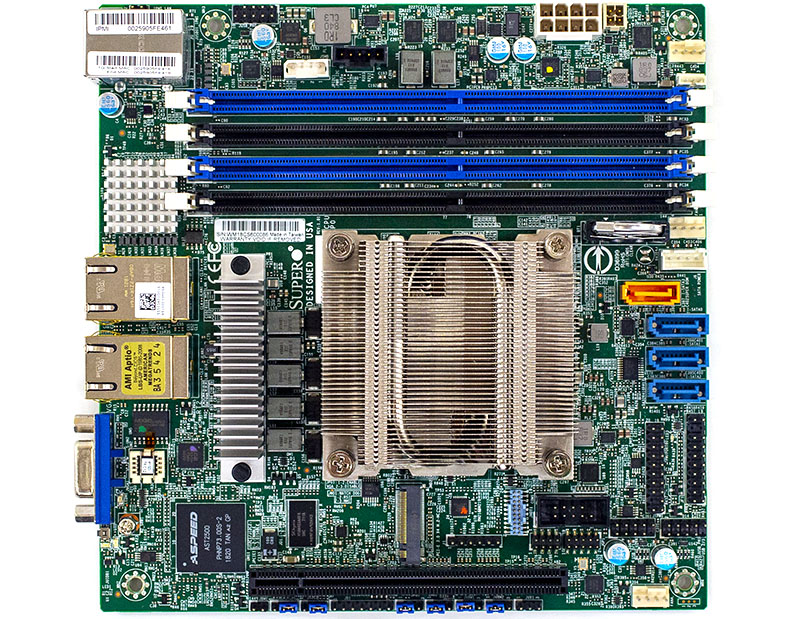
At the heart of the M11SDV-4CT-LN4F is the AMD EPYC 3101 CPU. This is the lower-cost option in the AMD EPYC 3000 line. The CPU itself if cooled via passive airflow from front to rear. The passive heatsink requires cooling from fans via the chassis. For those designing systems around the M11SDV-4CT-LN4F you need to ensure that this 35W TDP SoC heatsink is getting proper airflow.
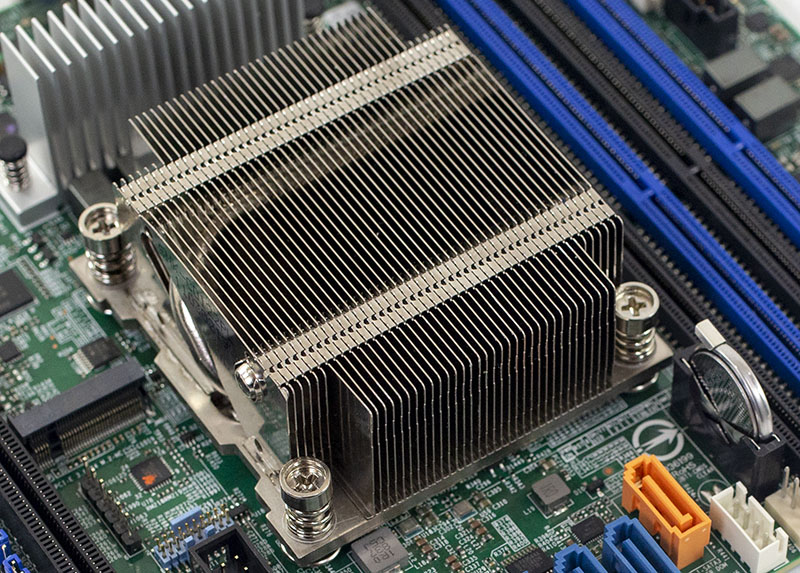
Sporting the AMD EPYC 3101 we have the first Intel Xeon D competitor from the AMD EPYC 3000 line. Here is a lscpu output:
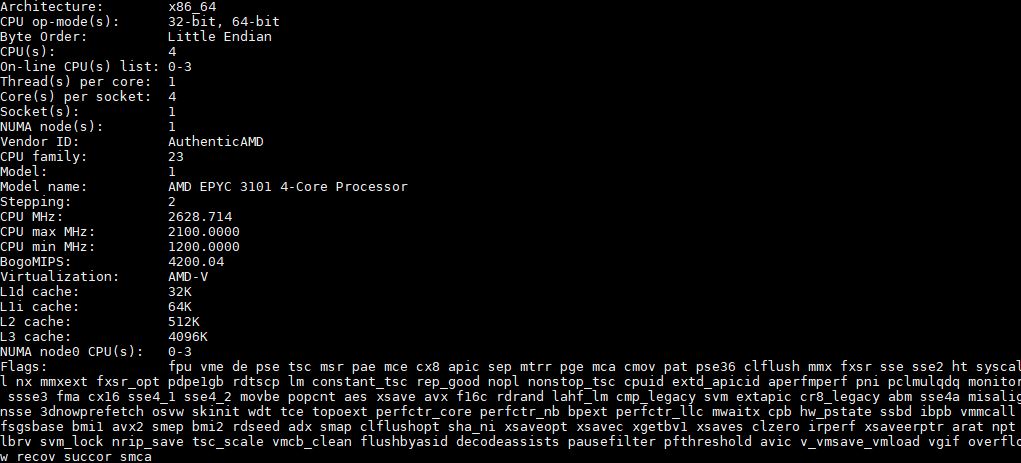
While the motherboard can support up to 4x 128GB DDR4-2666 DIMMs for a total of 512GB. We see 128GB or even 256GB as being the limit most users will want given current DRAM pricing. Most configurations using 64GB or lower.
For M.2 connectivity there is a PCIe 3.0 x4 M.2 2280 (80mm) slot for SSDs. Many SSDs with power loss protection are 110mm. We see this M.2 slot used mostly for a read cache or boot device in systems.
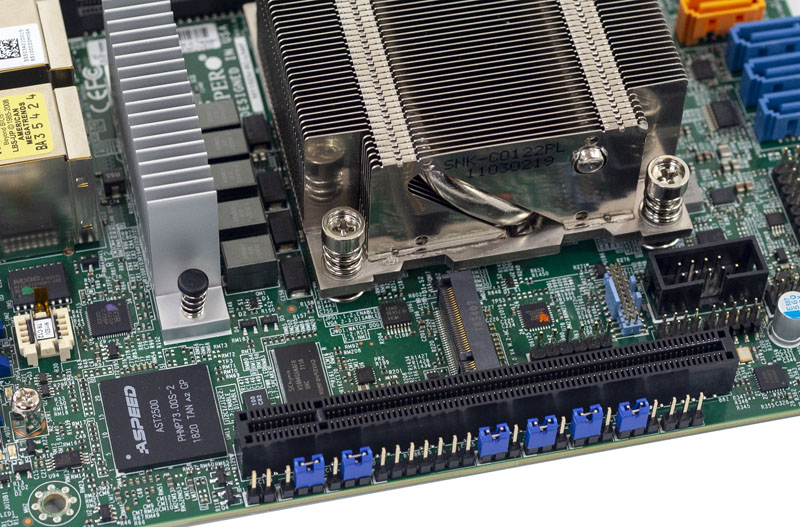
Likewise, there is SR-IOV and IOMMU support on the platform. We also wanted to note for our readers that the PCIe x16 slot is capable of running in x16, x8x8, or x4x4x4x4 mode. The 4×4 mode is useful if one, for example, wanted to use four PCIe NVMe SSDs:
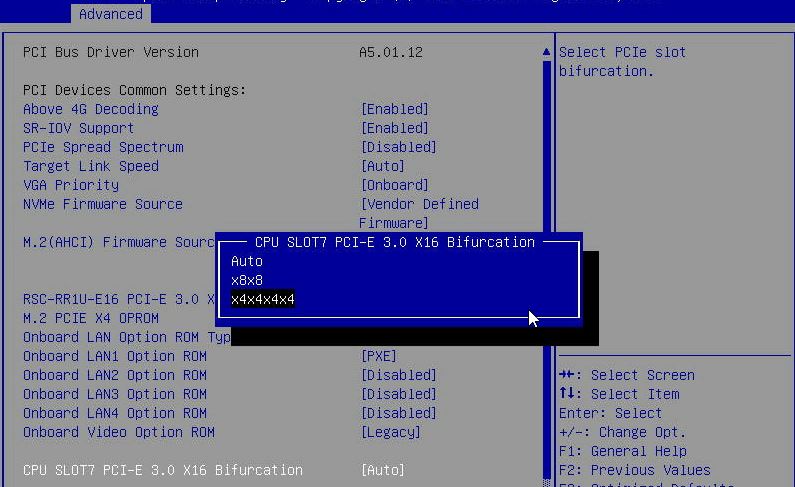
The Supermicro M11DV-4CT-LN4F has a standard front panel header, COM port, and USB 2.0 headers. You will not find a Type-A USB internal header nor a USB 3.0 front panel header. From the look of the motherboard, there does not seem to be room for those features.
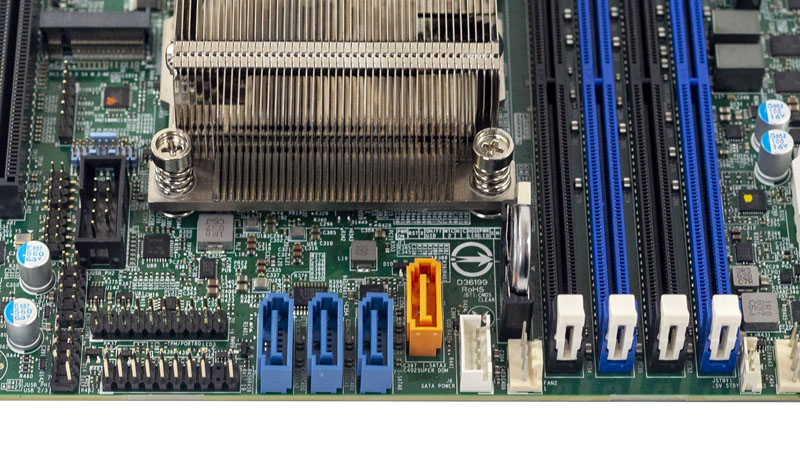
We also see four 7-pin SATA ports. One is an orange/ gold port for SATADOMs. In that port, a SATADOM does not need an additional power cable to operate which is handy in embedded applications. That white header between the SATADOM port and the battery is a power connector. When on DC power, Supermicro makes cables for that header that can power four hard drives/ SSDs.
The motherboard itself has three 4-pin PWM headers. That allows for a redundant SoC cooling path as well as a peripheral fan. You will also notice a single 8-pin power header. Like the other initial members of the M11SDV family, Supermicro sacrificed the traditional ATX 24-pin connector to save space. The company already did this on some of their Intel embedded motherboards.
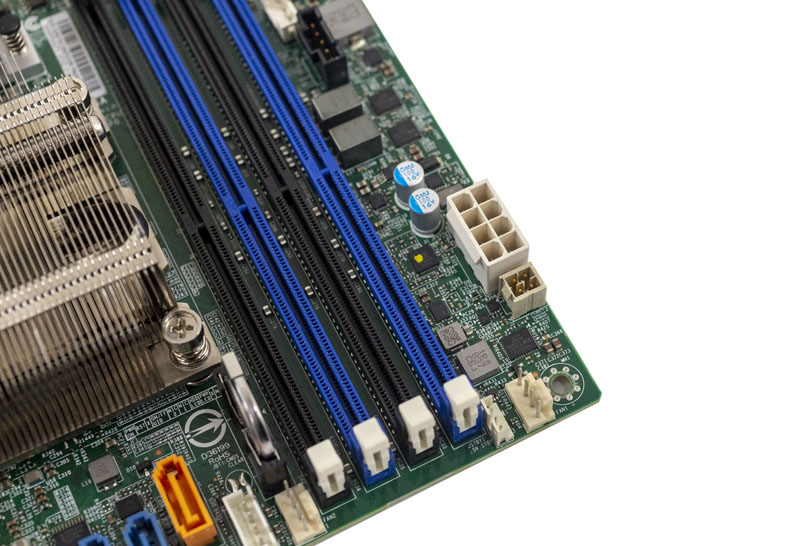
The rear I/O is comprised of a legacy VGA port on the right side and two USB 3.0 ports plus a management port on the left. Overall I/O pinout is compatible with a wide range of Supermicro embedded products so those that have systems based on Intel embedded products can likely use the same I/O shields and chassis with the Supermicro M11SDV-4CT-LN4F. You can also use this exact same I/O with all four of the launch M11SDV-4CT-LN4F to have four CPU levels in a similar appliance.

Networking is provided by an Intel i350 quad port NIC. This is a 1GbE NIC that supports higher-end features like SR-IOV. At the same time, Supermicro is not leveraging the AMD EPYC 3101’s quad 10GbE NIC. While we wanted to see a 10GBE solution, we understand the conservative design decision for a first-generation embedded product. The Intel i350 is well supported by every major OS vendor and there are many firewall and embedded appliances that do not need 10GbE.
Next, were are going to look at the Supermicro M11SDV-4CT-LN4F management and system topology. We will then show performance figures along with power consumption and our final thoughts.

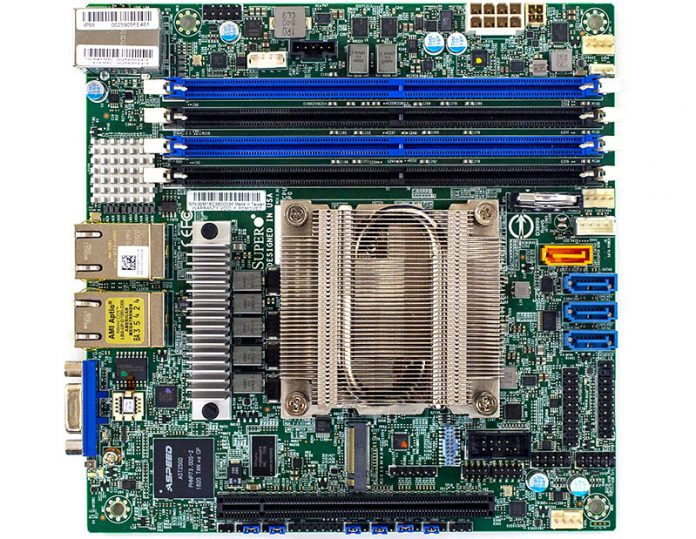



Thanks for reviewing this motherboard. I actually have two of these motherboards running pfSense. They run great for my application.
If only it had two 10Gbit NIC:s, it would be a perfect pfSence board. My ISP offers a 1Gbit line, with an option to upgrade it to ~4Gbit line so I am looking something for that atm, but I guess my choices are either with Intel board or AMD with extra LAN card, which is bit sad. IMO Supermicro should have designed these board for a specific use case, and to be honest I cannot see which is a correct use case for this product. It has neither enough SATA / m.2 or expansion slots to be NAS board nor does it have fast enough NIC for Pfsense purposes. Kinda sad to see the missed opportunity for AMD fans. It is all around board which doesn’t do anything extraordinarily well which I feel would have been within reach if they did not try to satisfy everyone with a single product that has limited space.
Can you recommend a power supply unit that is of small form factor and has enough juice to power this board alone without any other peripherals?